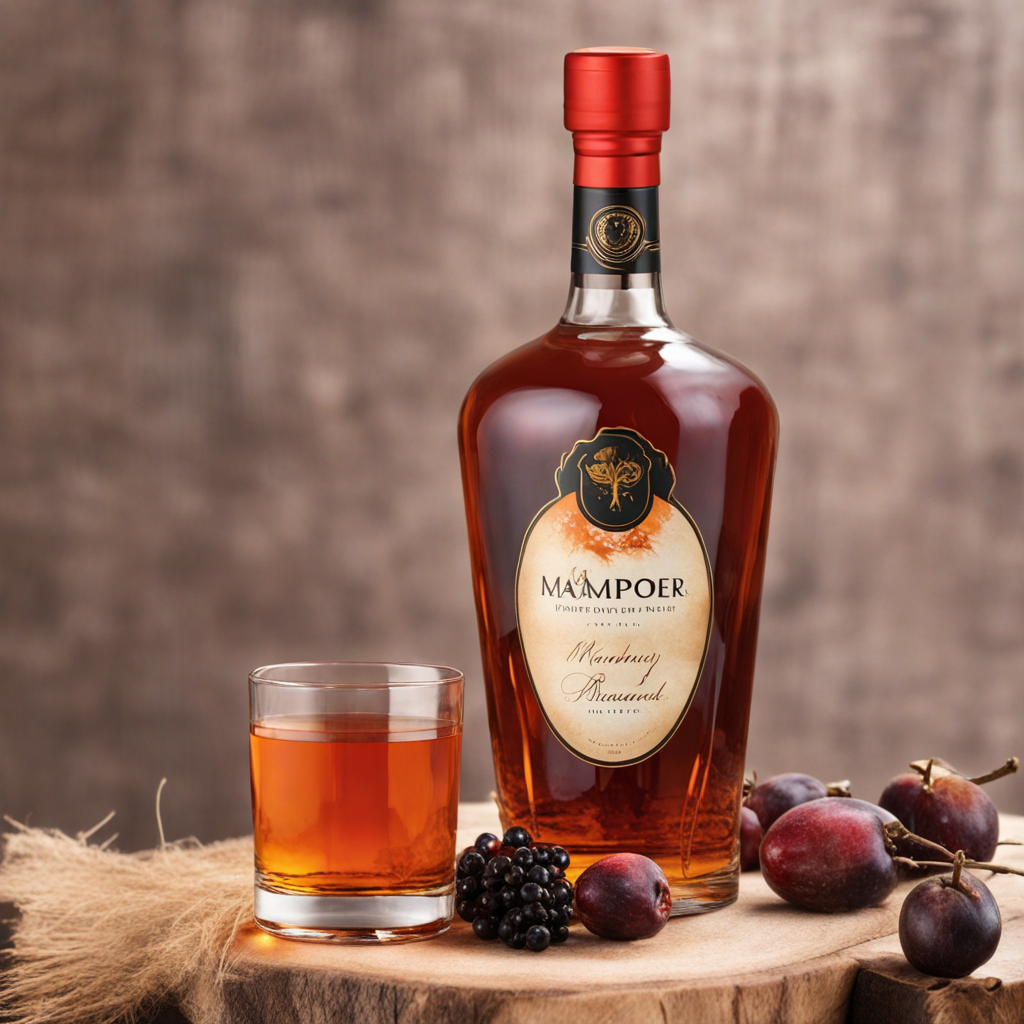Mampoer
Mampoer is a traditional South African spirit that captures the essence of the country's diverse agricultural heritage. Made predominantly from fermented fruit, such as peaches, apricots, or even marula, this potent drink showcases the natural sweetness and flavors of the ingredients used. The fermentation process can be quite artisanal, often involving small-scale, family-run distilleries that pay homage to age-old recipes handed down through generations. The result is a clear, high-proof liquor that boasts a rich bouquet, inviting you to explore its unique aroma before taking your first sip. On the palate, Mampoer presents a delightful balance of sweetness and warmth, with its fruity notes dancing harmoniously alongside a subtle, earthy undertone. Each variety offers its own distinct flavor profile, depending on the fruit used and the method of production. For instance, marula Mampoer may evoke a tropical essence, while peach Mampoer could deliver a more summery, floral taste. The spirit is often enjoyed neat or with a splash of soda, allowing the drinker to savor the intricate layers of flavor that unfold with each sip. Mampoer is not just a drink; it is a cultural experience that brings people together. Traditionally enjoyed during social gatherings or celebrations, it embodies the spirit of South African hospitality. As you explore this unique beverage, you'll find that it pairs beautifully with traditional dishes, enhancing the overall dining experience. Whether sipped under the African sun or shared among friends around a braai, Mampoer offers a memorable taste of South Africa that invites you to discover and appreciate its rich heritage.
How It Became This Dish
Mampoer: The Spirit of South Africa Mampoer, often referred to as “the spirit of South Africa,” is a traditional fruit brandy that carries with it a rich tapestry of history, culture, and social significance. This potent beverage has its roots deeply embedded in the agricultural practices and social traditions of the South African people, particularly among the Afrikaans and indigenous communities. To truly appreciate mampoer, we must explore its origins, cultural significance, and the evolution of its production over time. Origins of Mampoer The word "mampoer" is derived from the Tswana term "mampoor" or "mampur," which refers to a type of fruit brandy, most commonly made from peaches, plums, or apricots. The origins of mampoer can be traced back to the early days of European colonization in the Cape of Good Hope during the 17th century. As Dutch settlers, known as the Cape Dutch, began to cultivate the land, they brought with them their distillation techniques and an array of fruit trees that flourished in the South African climate. The early settlers started fermenting the fruits they harvested, creating a rudimentary form of brandy. The process of distillation was refined over time, influenced by both European practices and indigenous methods. The Khoisan tribes, who had been living in the region for thousands of years, had their own techniques for fermenting fruits and creating alcoholic beverages. This fusion of European and indigenous practices led to the creation of mampoer as we know it today—a potent spirit that embodies both tradition and innovation. Cultural Significance Mampoer holds a special place in South African culture, especially among the Afrikaans people. It is often associated with rural life and the traditions of the platteland (countryside). Mampoer is not merely a drink; it is a symbol of hospitality, communal gatherings, and celebration. In many farming communities, it is customary to brew mampoer at home, particularly during harvest time, as a way to preserve the fruits of the land. The production of mampoer is often a communal activity, involving family and neighbors who come together to share in the labor and the fruits of their labor. It is common to see groups of people gathering to make mampoer, with stories and folklore passed down through generations. The drink itself is often featured at important life events such as weddings, funerals, and festivals, serving as a bridge between past and present, connecting people with their heritage. In addition to its role in social settings, mampoer is steeped in cultural lore. Many believe that mampoer has medicinal properties, used as a remedy for various ailments. It is often touted for its ability to warm the body and spirit, a testament to its place in the hearts of those who consume it. Development Over Time As South Africa transitioned through various historical phases, so too did the production and perception of mampoer. During the apartheid era, the drink became a symbol of resistance for some communities, embodying the spirit of resilience and self-sufficiency in a time of oppression. The ability to produce mampoer at home represented a form of autonomy and a connection to cultural heritage, as many communities relied on their own resources to survive and thrive. In recent decades, there has been a resurgence in interest in mampoer, particularly as part of a broader movement to celebrate and preserve South African culinary traditions. With the rise of craft distilleries and a growing appreciation for artisanal products, mampoer has found its way into the hearts and homes of a new generation. Young distillers are experimenting with traditional recipes while incorporating modern techniques and flavors, leading to a new wave of mampoer that honors its roots while embracing innovation. Contemporary mampoer producers pay homage to traditional methods, often using glass pot stills and natural fermentation processes. The resurgence of interest in organic and locally sourced ingredients has also influenced how mampoer is made today. Many producers emphasize the use of seasonal fruits and sustainable practices, allowing the spirit to reflect the unique terroir of the regions in which it is produced. Mampoer Today Today, mampoer is enjoying a renaissance, with several craft distilleries across South Africa producing variations that celebrate the diverse fruits of the region—from the classic peach and apricot to more adventurous flavors like prickly pear and wild fig. These modern interpretations of mampoer are sometimes marketed as a unique South African spirit, appealing to both locals and international audiences. Mampoer has also found its way into the global spirits market, with some distilleries exporting their products, sharing this traditional South African drink with the world. Tasting events and distillery tours have become popular, allowing enthusiasts to learn about the history and production processes while enjoying the fruits of their labor. The rise of the cocktail culture has also influenced how mampoer is consumed. Mixologists are beginning to incorporate mampoer into creative cocktails, showcasing its versatility and unique flavor profile. This modern twist not only introduces mampoer to new audiences but also redefines its image from a rustic, homemade spirit to a sophisticated ingredient that can hold its own in upscale venues. Conclusion Mampoer is much more than just a fruit brandy; it is a living testament to the history, culture, and resilience of South Africa. From its humble beginnings as a simple fermented beverage to its current status as a celebrated artisanal spirit, mampoer encapsulates the spirit of the land and its people. As South Africans continue to honor and innovate this traditional drink, mampoer will undoubtedly remain a cherished symbol of cultural identity, community, and the enduring legacy of those who came before. Whether sipped neat, shared among friends, or crafted into contemporary cocktails, mampoer continues to weave stories of connection and celebration into the fabric of South African society.
You may like
Discover local flavors from South Africa







